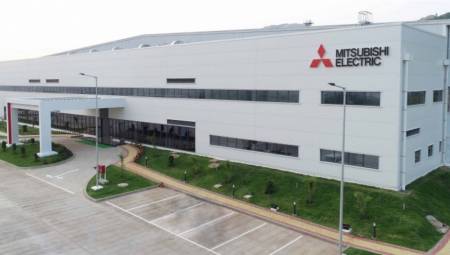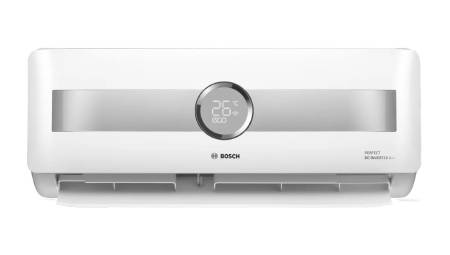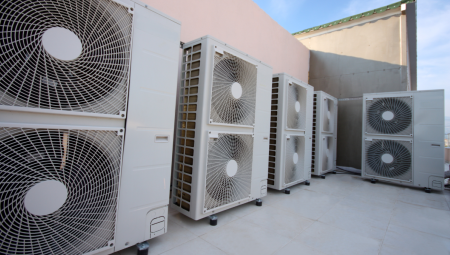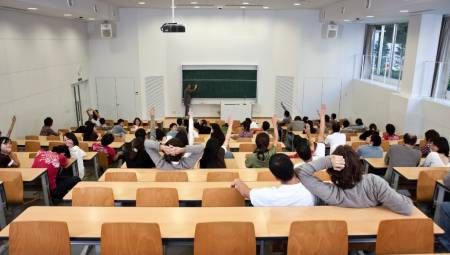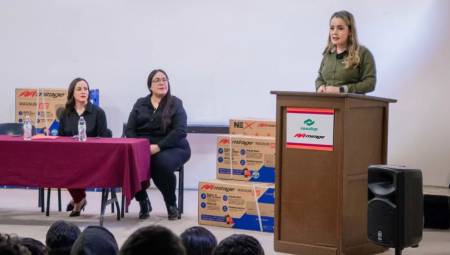 Comparative study on unconventional household refrigerators
Comparative study on unconventional household refrigeratorsThis article aims to present part of a comparative study on unconventional refrigerators (solar, photovoltaic (PV), DC, vapor compression, thermoelectrics, absorption and adsorption) carried out as part of the project called "Hybrid domestic enser".
It shows the methodology for comparing the types of refrigeration systems used in unconventional commercial residential refrigerators, patents on unconventional refrigerators and recent technologies used in this type of refrigerators. Also showing how these technologies are related, which predominate in the current market and some design trends on this type of equipment.
Doctor Vicente Borja Ramírez
INTRODUCTION
The main way to generate electricity today is through thermoelectric plants, which cover 45% of the effective installed capacity in Mexico. The electrical energy produced by thermoelectric plants is obtained from primary energy sources such as hydrocarbons and coal.
The gradual depletion and difficult extraction of reserves from primary energy sources have led to an increase in their monetary value and, therefore, an increase in the cost of electricity. In this way, the growth of the renewable energy industry, including solar, will benefit in the long term, since such energy sources are inexhaustible and have no cost.
According to the Fideicomiso para el Ahorro de Energía Eléctrica (Fide), the refrigerator ranks second in the electricity consumption of a home (without air conditioning) in Mexico. Hence, the importance of promoting the development of alternative cooling systems that work with renewable energy sources that minimize the consumption of electrical energy from the conventional electricity grid (REC).
When designing and developing a product such as a refrigerator, a stage prior to the generation of concepts is the search for information, which gives us the confidence that they have been explored if not all, a large part of the alternatives.
Ulrich and Eppinger (2008) recommend performing an external and internal search prior to conceptual development.
An external search may include a comparative study, which may contain expert consultation, patent search-analysis, commercial product search-analysis, generation of comparative frameworks, and research on the technology used.
BACKGROUND
Solar cooling has had great technological advances and encompasses various cooling systems. Photovoltaic equipment has been widely used in the health sector. By the end of 1985, 600 solar PV refrigerators had been installed in the world, in 1993 about 3,700, of which half were installed in Africa and by the end of the 90s 7,000 were installed (Pilatowsky, 2004).
Some refrigeration equipment with domestic steam compression system is said to require between 100 and 120 Watts of photovoltaic (PV) power (Pilatowsky, 2004) or even less in some regions of the country, as has been shown in some articles (Foster et al, 2009). This demand for PV power will decrease as the capture technology advances.
Methodology
This comparative study is based on the methodology of searching for external information proposed by Ulrich and Eppinger (2008).
To search for information, web pages, Internet databases, brochures, magazines and some articles related to unconventional refrigeration were consulted.
Process development
We conducted an extensive search on commercial unconventional household refrigerators. At the same time as obtaining information from the equipment, technical sheets were prepared, which contain the following information: brand, models, dimensions, cooling system, type of insulation, electricity consumption, voltage and price values, among others.
Likewise, a search for patents on unconventional refrigerators, focused on the use of renewable energies and alternative technologies to the vapor compression cycle was carried out through the online search engine Free Patents Online and in the database of the World Intellectual Property Organization (WIPO, WIPO). 35 patents on the subject were located, of which a total of 18 were analyzed. Patents include thermoelectric, hybrid (conventional solar and electric), absorption, adsorption and vapor compression refrigerators. Its analysis consisted of the elaboration of 18 technical sheets that synthesize its principle of operation, main components, figures and representative schemes of refrigeration systems are included.
Based on these two types of tokens (commercial refrigerators and patents analyzed, unconventional and focused on the use of renewable energies) an analysis and identification of the main components of commercial refrigerators was carried out.
 Comparative frameworks
Comparative frameworks
These graphical representations served to identify market niches and detect opportunities for innovation. These graphically represented information collected with unconventional domestic commercial refrigerators and in patent search. For the elaboration of these representations, aspects such as cost, the use of renewable energies and existing cooling technologies in the market were involved (Figure 1).
By searching and analyzing information from solar cooling and unconventional commercial household equipment, the different technologies used in patents and commercial refrigerators were detected:
Type of technologies found in commercial refrigerators and patents
 We identified 34 unconventional domestic refrigeration equipment from 11 companies focused on domestic refrigeration using alternative energy sources to the REC:
We identified 34 unconventional domestic refrigeration equipment from 11 companies focused on domestic refrigeration using alternative energy sources to the REC:
Of the previous ones, several systems were found:
13 Autonomous photovoltaics with vapor compression system.
1 With hybrid cooling system (steam compression-thermoelectric cells) and supplied by PV panels.
1 Solar with absorption cooling system.
12 autonomous DC with the possibility of using PV Panel/s as a power medium.
4 Gas as power – absorption as cooling system.
3 Hybrids (gas-electricity) as power and absorption as cooling system.
 In the analysis of the 34 unconventional refrigerator equipment on the market, only refrigerators with cooling systems of the type: thermoelectric, absorption and vapor compression (and some combinations such as thermoelectric-compression) were found. Some of the previous ones were hybrids in their power supply system or only had a single means of energy supply.
In the analysis of the 34 unconventional refrigerator equipment on the market, only refrigerators with cooling systems of the type: thermoelectric, absorption and vapor compression (and some combinations such as thermoelectric-compression) were found. Some of the previous ones were hybrids in their power supply system or only had a single means of energy supply.
Based on the two types of tokens mentioned (commercial refrigerators and patents analyzed, unconventional and focused on the use of renewable energies) about 17 predominant components were identified which are very useful in the stage of conceptual development.
CONCLUSIONS AND FURTHER WORK
We can say that photothermal technologies are mostly applied to an external use to the home, industrial applications such as ice production and integral equipment, being the opposite for photovoltaic equipment (residential and modular applications).
On the other hand, photothermal equipment is less familiar to users and technicians, although these have already had enough time to be applied. However, compression systems predominate. As for thermoelectric equipment, its high cost is an impediment to its application, so they are mostly used in low-scale cooling (≤ 50-60 W capacity).
It should be mentioned that the most recent patents are aimed not only at electrical storage, but also at thermal storage and increasing efficiency; to this end, the elimination of charge controllers, batteries and inverters is sought to promote the use of direct current equipment and equipment with electronic control in such a way that they increase the efficiency in the handling of available photovoltaic energy.
The above is consistent with the design trends mentioned by Pérez et al, 2009, which complements both publications.
As for the subsequent work, the data provided by this comparative study have served to date in the process of the project "Hybrid domestic enser", which contributed to the conceptual development of the prototype in current construction.




